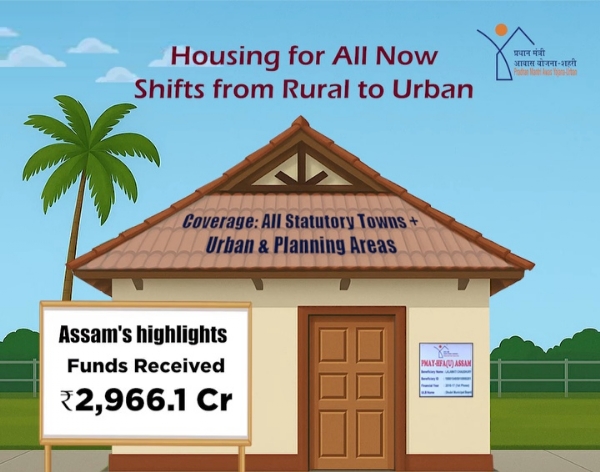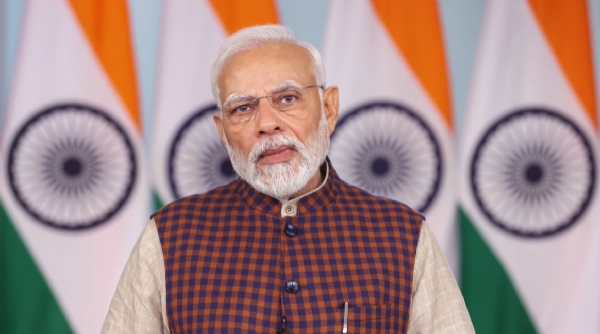
Prayagraj/Lucknow,
12 April (HS): Amidst the towering heights of the Himalayas, where clouds kiss
the earth and valleys whisper secrets, the dream of Indian Railways has taken
full shape in the form of the Udhampur-Srinagar-Baramulla Rail Link (USBRL).
The grandeur of this project is reflected in its tunnels—hidden corridors that
not only conquer geography but also pave the way for the speed of the future.
Out of the 272-kilometre USBRL railway route, 36 major tunnels cover nearly 119
kilometres. Some of these tunnels are so long and complex that they have become
milestones in engineering excellence.
1.
T-50 – India’s Longest Transport Tunnel
Length:
12.77 km | Location: Sumber–Khari
Tunnel
T-50, India’s longest transport tunnel, stands as a vital lifeline, seamlessly
linking the Kashmir Valley with the rest of the nation. Constructed using the
New Tunneling Method, it navigates through formidable rock formations such as
quartzite, gneiss and phyllite. The tunnel features a main passage alongside a
parallel escape tunnel, interconnected by cross-passages at every 375-metre
interval. Its construction was fraught with challenges, including landslides,
high water ingress, shear zones and jointed volcanic rock structures. To
counter these obstacles, engineers strategically developed three adits (access
tunnels), allowing simultaneous excavation from multiple points and significantly
expediting progress. Through resilience and innovation, India’s longest
transport tunnel emerged—a true marvel of engineering excellence.
2.
T-80 – The Backbone of Kashmir in the Pir Panjal Range
Length:
11.2 km | Location: Banihal–Qazigund
Built
under the Pir Panjal range, T-80 tunnel ensures year-round connectivity between
Jammu and Kashmir. Overcoming barriers of snowfall and altitude, it
significantly enhances transportation and trade and can be termed as ‘the
backbone of USBRL’.
3.
T-34 – Dual-Passage Ingenuity
Length:
5.099 km | Location: Pai-Khad to Anji Khad
Tunnel
T-34, a crucial link in the USBRL Project, stands as a testament to engineering
ingenuity, seamlessly connecting Pai-Khad to Anji Khad. Spanning 5.099 km, it
features a twin-tube design—a Main Tunnel for train operations and a parallel
Escape Tunnel for safety, interconnected by cross-passages at 375-metre
intervals.
This
twin tunnel system, carved through the Sirban Dolomite rock formations, is
connected to Anji Khad Bridge, India’s first cable-stayed railway bridge, with
cross-passages every 375 metres, ensuring both safety and operational
efficiency.
4.
T-33 – A Challenging Route Beneath Trikuta’s Shadow
Length:
3.2 km | Location: Katra–Banihal section
Tunnel
T-33, the most challenging section of the Katra-Banihal stretch, spans 3.209 km
at the base of the Trikuta Hills, forming a crucial link to the Kashmir Valley.
Navigating highly fractured dolomite and the Main Boundary Thrust zone, it
faced severe geological challenges, including a major collapse in October 2017
that halted progress for months.
The
project adopted the I-System of Tunneling in March 2022, incorporating deep
drainage, umbrella pipe roofing, chemical grouting and reinforced supports to
stabilise the structure. After years of perseverance, a breakthrough was
achieved on 20 December 2023, marking a key milestone in this vital railway
corridor.
5.
T-23 – A Testament to Technical Innovation
Length:
3.15 km | Location: Udhampur–Chak Rakhwal
Tunnel
T-23 is the longest on this section, featuring a ballast-less track between
Udhampur and Chak Rakhwal railway stations. In 2008, severe squeezing, swelling
and bottom heaving caused major setbacks, requiring expert intervention.
Overcoming these challenges, the tunnel was successfully completed, marking a
significant milestone in the project.
6.
T-1 – A Tunnel Built Using Cutting-Edge Techniques
Length:
3.209 km
T-1,
unfortunately, also faced the relentless challenges posed by the Main Boundary
Thrust, including severe mud and water ingress. To counter these issues, the
advanced I-System of Tunneling was successfully deployed,
integrating deep drainage pipes, umbrella pipe roofing and chemical grouting to
ensure structural stability and safety.
7.
T-25 – The Battle Against an Underground Water Stream
Length:
3 km
The
construction of Tunnel T-25 spanned six years, marked by the formidable
challenge of an unexpected underground water stream discovered during
excavation in 2006. This stream discharged between 500 and 2000 litres of water
per second, posing significant hurdles. Overcoming this natural obstacle
demanded unwavering determination, innovative engineering, and relentless
effort from the project team.
The
tunnels of USBRL are the lifelines embedded within the Himalayas, connecting
Kashmir to the heart of India. Each tunnel tells a story—of struggle,
innovation and triumph. With the echoes of rock-breaking machines, they herald
the dawn of a new era. These tunnels through the Himalayas symbolise not just
connectivity but India’s unwavering resolve.
Hindusthan Samachar / Abhishek Awasthi




